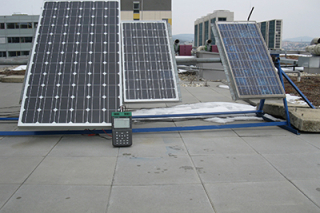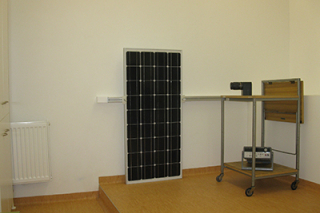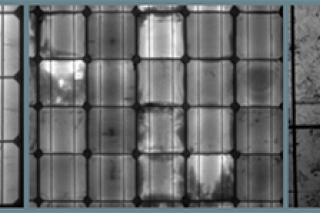This laboratory is used during laboratory practice during our subjects Renewable energy sources and Alternative energy sources which are facultative subjects during master studies at FEEC BUT. More than 15 laboratory tasks are prepared for students. These tasks are created according to the subjects focusing on photovoltaic and electrochemical energy sources.
An outdoor terrace, which can be used for real-world tests of photovoltaic panels, is a part of this laboratory. There is also a dark room where electroluminescence of photovoltaic panels can be detected. This laboratory is used for working on Bachelors´and Masters´ theses.
Main activities
The electroluminescence method can detect defects of photovoltaic panels that are not visible or detectable by other methods. The measurement uses the reciprocal function of a solar cell when there is a light emission after connecting the cell to an electricity source. Defects do not emit any or only very low-intensity radiation, therefore, they can be seen in the resulting pictures.
The measurement is done in a dark room. The panel is scanned by a scientific camera G2-3200.
This camera has the following characteristics::
- High sensitivity with top quantum efficiency over 80%
- The lowest read noise is limited only by the CCD chip itself
- High dynamic range with 16bit digitization and linear response
- Efficient and precisely controlled cooling
The camera supports very sensitive full-frame CCD detectors Kodak with low noise. Advanced analog electronic circuits guarantee very low read noise. Efficient two-stage cooling with Peltier cells keeps the chip at temperatures very low under zero degrees Celsius to minimize heat noise.


